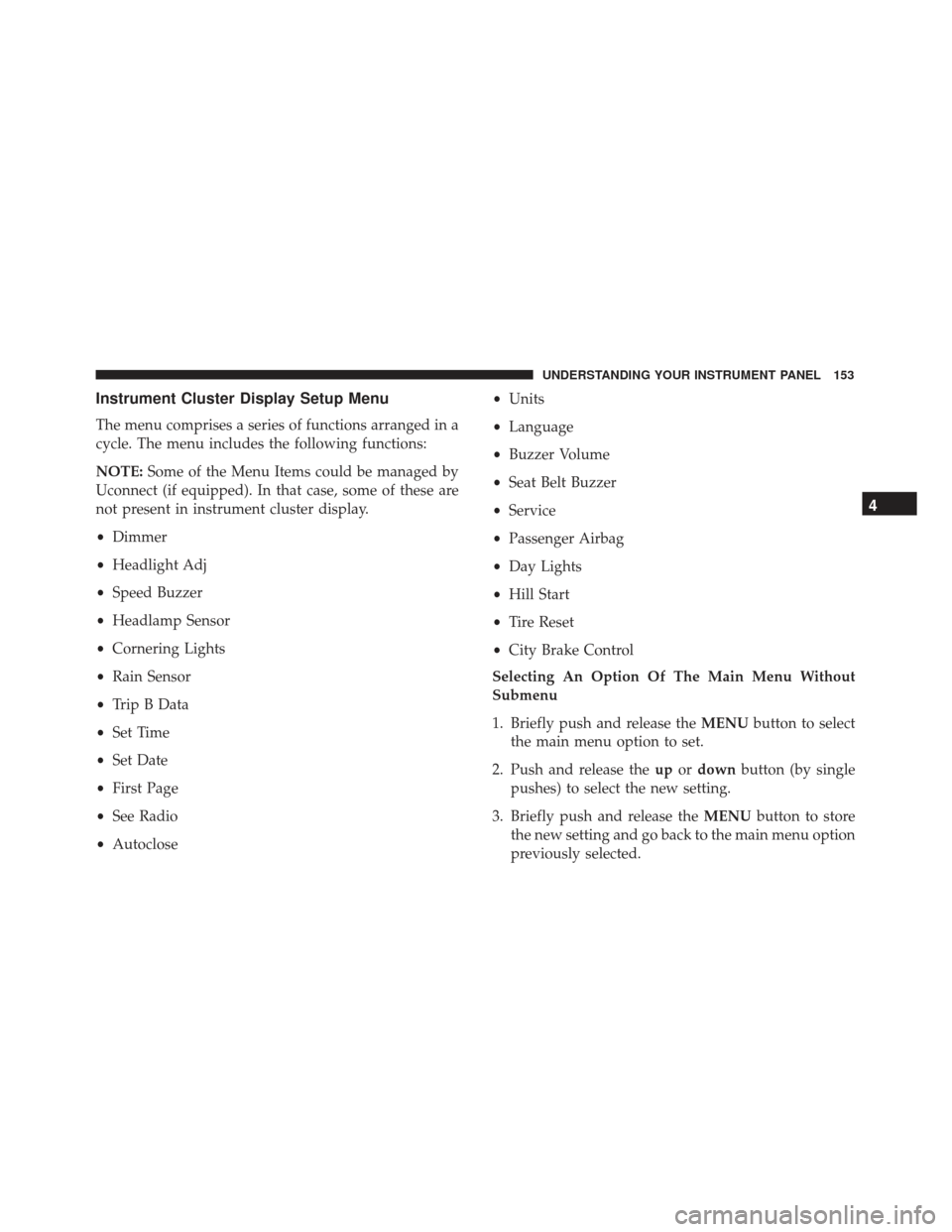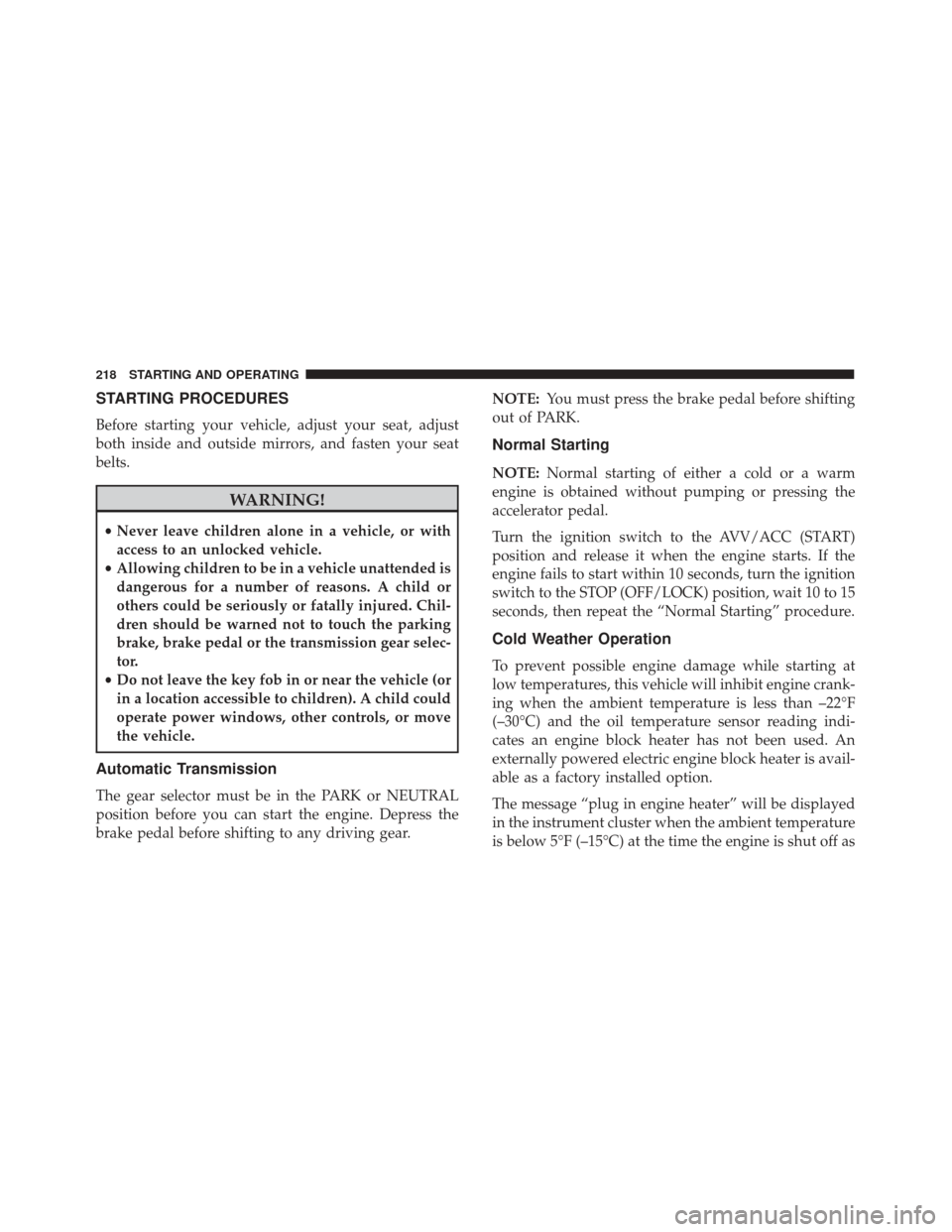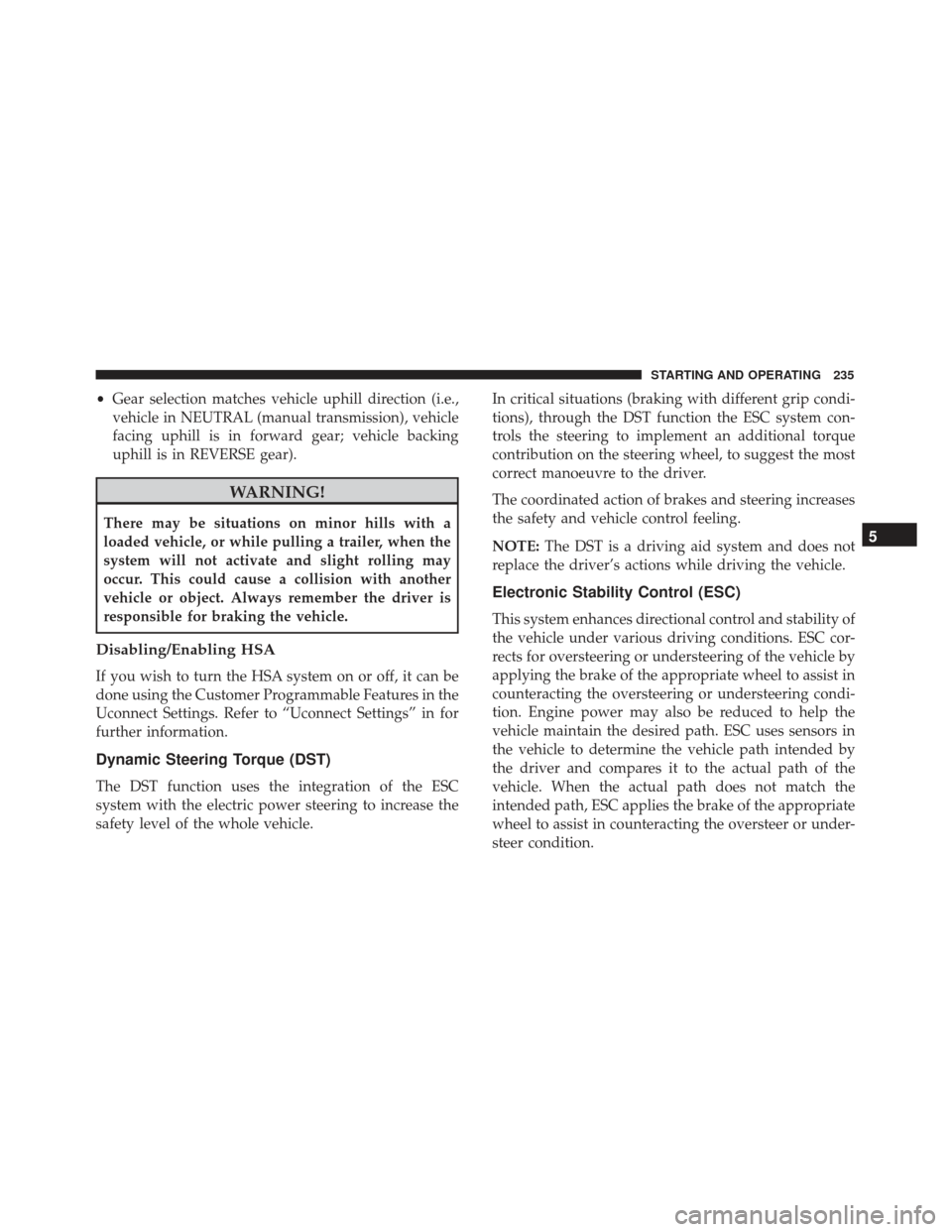brake sensor FIAT 500L 2017 2.G Owners Manual
[x] Cancel search | Manufacturer: FIAT, Model Year: 2017, Model line: 500L, Model: FIAT 500L 2017 2.GPages: 370, PDF Size: 3.56 MB
Page 155 of 370

Instrument Cluster Display Setup Menu
The menu comprises a series of functions arranged in a
cycle. The menu includes the following functions:
NOTE:Some of the Menu Items could be managed by
Uconnect (if equipped). In that case, some of these are
not present in instrument cluster display.
• Dimmer
• Headlight Adj
• Speed Buzzer
• Headlamp Sensor
• Cornering Lights
• Rain Sensor
• Trip B Data
• Set Time
• Set Date
• First Page
• See Radio
• Autoclose •
Units
• Language
• Buzzer Volume
• Seat Belt Buzzer
• Service
• Passenger Airbag
• Day Lights
• Hill Start
• Tire Reset
• City Brake Control
Selecting An Option Of The Main Menu Without
Submenu
1. Briefly push and release the MENUbutton to select
the main menu option to set.
2. Push and release the upordown button (by single
pushes) to select the new setting.
3. Briefly push and release the MENUbutton to store
the new setting and go back to the main menu option
previously selected.
4
UNDERSTANDING YOUR INSTRUMENT PANEL 153
Page 220 of 370

STARTING PROCEDURES
Before starting your vehicle, adjust your seat, adjust
both inside and outside mirrors, and fasten your seat
belts.
WARNING!
•Never leave children alone in a vehicle, or with
access to an unlocked vehicle.
• Allowing children to be in a vehicle unattended is
dangerous for a number of reasons. A child or
others could be seriously or fatally injured. Chil-
dren should be warned not to touch the parking
brake, brake pedal or the transmission gear selec-
tor.
• Do not leave the key fob in or near the vehicle (or
in a location accessible to children). A child could
operate power windows, other controls, or move
the vehicle.
Automatic Transmission
The gear selector must be in the PARK or NEUTRAL
position before you can start the engine. Depress the
brake pedal before shifting to any driving gear. NOTE:
You must press the brake pedal before shifting
out of PARK.
Normal Starting
NOTE: Normal starting of either a cold or a warm
engine is obtained without pumping or pressing the
accelerator pedal.
Turn the ignition switch to the AVV/ACC (START)
position and release it when the engine starts. If the
engine fails to start within 10 seconds, turn the ignition
switch to the STOP (OFF/LOCK) position, wait 10 to 15
seconds, then repeat the “Normal Starting” procedure.
Cold Weather Operation
To prevent possible engine damage while starting at
low temperatures, this vehicle will inhibit engine crank-
ing when the ambient temperature is less than –22°F
(–30°C) and the oil temperature sensor reading indi-
cates an engine block heater has not been used. An
externally powered electric engine block heater is avail-
able as a factory installed option.
The message “plug in engine heater” will be displayed
in the instrument cluster when the ambient temperature
is below 5°F (–15°C) at the time the engine is shut off as
218 STARTING AND OPERATING
Page 237 of 370

•Gear selection matches vehicle uphill direction (i.e.,
vehicle in NEUTRAL (manual transmission), vehicle
facing uphill is in forward gear; vehicle backing
uphill is in REVERSE gear).
WARNING!
There may be situations on minor hills with a
loaded vehicle, or while pulling a trailer, when the
system will not activate and slight rolling may
occur. This could cause a collision with another
vehicle or object. Always remember the driver is
responsible for braking the vehicle.
Disabling/Enabling HSA
If you wish to turn the HSA system on or off, it can be
done using the Customer Programmable Features in the
Uconnect Settings. Refer to “Uconnect Settings” in for
further information.
Dynamic Steering Torque (DST)
The DST function uses the integration of the ESC
system with the electric power steering to increase the
safety level of the whole vehicle. In critical situations (braking with different grip condi-
tions), through the DST function the ESC system con-
trols the steering to implement an additional torque
contribution on the steering wheel, to suggest the most
correct manoeuvre to the driver.
The coordinated action of brakes and steering increases
the safety and vehicle control feeling.
NOTE:
The DST is a driving aid system and does not
replace the driver’s actions while driving the vehicle.
Electronic Stability Control (ESC)
This system enhances directional control and stability of
the vehicle under various driving conditions. ESC cor-
rects for oversteering or understeering of the vehicle by
applying the brake of the appropriate wheel to assist in
counteracting the oversteering or understeering condi-
tion. Engine power may also be reduced to help the
vehicle maintain the desired path. ESC uses sensors in
the vehicle to determine the vehicle path intended by
the driver and compares it to the actual path of the
vehicle. When the actual path does not match the
intended path, ESC applies the brake of the appropriate
wheel to assist in counteracting the oversteer or under-
steer condition.
5
STARTING AND OPERATING 235